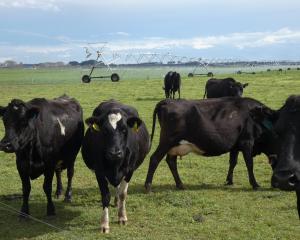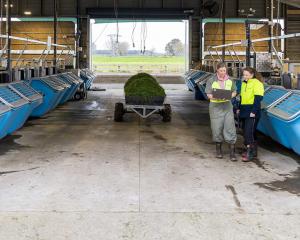DairyNZ's latest economic survey paints a positive picture of on-farm investment, as dairy farmers catch up on deferred spending on the strength of increased milk income.
Senior economist Matthew Newman said the annual farmer survey showed the largest increases in spending during 2017-18 were on feed, repairs, maintenance and labour, and it was likely expenditure had increased further in 2018-19.
Mr Newman said the 2017-18 season was difficult because of a dry spring-early summer for all regions.
''That affected pasture growth and peak milk production. It's also the season that Mycoplasma bovis was discovered.''
While the milk payout increased 83c to $6.62 per kilogram of milk solids, the average break-even milk price increased 70c to $5.87 per kg milk solids in 2017-18, reflecting higher farm working expenses, increased tax payments and drawings.
Volatile weather also affected local farmers. Taieri dairy farmer Ad Bekkers said much of the benefit of improved milk prices was taken up with increased compliance costs, while high rainfall also had an impact on farm profitability.
''Flooding has had a major impact on our production over the past two years, of around 20-25%.
''These are losses that are difficult to recoup during peak production,'' Mr Bekkers said.
''This survey is a good reminder that as a sector, we need to maintain our competitiveness by striving to produce milk at profitable margins and being prepared for fluctuations in milk prices,'' Mr Newman said.
DairyNZ farm business developer Angie Fisher said the economic survey could help inform planning for the 2019-20 dairy season.
''The economic survey provides financial data for both owners and herd-owning sharemilkers, along with forecasts for the 2019-20 seasons. This makes it a useful resource for farm budgeting.
''The biggest single physical difference in highly profitable farms is pasture consumption per hectare. Those with higher profit have higher pasture eaten per hectare than average for every extra tonne of pasture eaten per hectare. On average, farms generate an extra $300 per hectare of operating profit.''
-By Brent Melville













